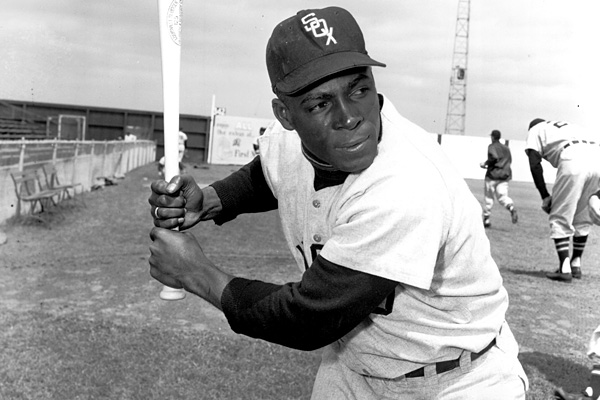 |
| Minoso was always tragically underrated (Grab Some Bench) |
McDougald had an outstanding season for the Bronx Bombers, helping them win their third straight championship by hitting .306/.396/.488 with 14 homers, 14 steals, and 4.6 bWAR. Minoso was even better, however, batting .326/.422/.500 with 112 runs and 5.5 bWAR. Minoso also led the majors in triples with 14 and the American League in steals with 31. The BBWAA correctly recognized Minoso as the more valuable player, for he finished fourth in the MVP voting to McDougald's ninth, so I'm not sure what happened with the ROY vote. Most likely, McDougald benefited from Yankee bias (Minoso was traded from Cleveland to Chicago) and perhaps even racism (Minoso was a black Latin-American star).
1953 NL Jim Gilliam over Harvey Haddix
Big screw-up here, as Gilliam wasn't even worth four bWAR whereas Haddix had over seven. Make no mistake, Gilliam had a phenomenal season in which he scored 125 runs, drew 100 walks, and led the major leagues in triples all while playing second base, but Haddix had the superior season. Aside from winning 20 games, the St. Louis southpaw maintained a 3.06 ERA (139 ERA+) and 1.14 WHIP over 253 innings. He also paced the National League in shutouts with six. Again, the BBWAA identified Haddix as the more valuable player by giving him MVP consideration (Gilliam got none, but probably deserved some) but screwed up in the Rookie of the Year vote. Gilliam undoubtedly benefited from his role on a thoroughly dominant 105-win Dodgers team, whereas Haddix toiled for a more mediocre 83-win Cardinals outfit.
1956 AL Luis Aparicio over Rocky Colavito
Colavito's OPS was 250 points higher than Aparicio's, and he hit seven times as many home runs. While it's true that Aparicio was an everyday shortstop (and a good one at that) who led the league in steals, Colavito was still the more valuable player per bWAR despite playing 49 fewer games and manning right field. My guess is that Aparicio made an impression on voters with his flashy defense and speed--a rarity in the largely white 1950s American League.
1957 AL Tony Kubek over Frank Malzone
Another example of Yankee bias as Kubek beat out a more-deserving Red Sox player. Kubek was a good utilityman who played five different positions and delivered league-average offense, but Malzone played a sterling third base (winning his first of three straight Gold Gloves) while posting much better batting statistics. Malzone's OPS was 35 points higher, for instance, even though he had 203 more official at-bats. Sure enough, Malzone made a serious dent in MVP voting, finishing seventh, while Kubek hardly get any support and finished a distant 26th.
1958 AL Albie Pearson over everyone else
Pearson had a pretty pedestrian season for an outfielder, hitting .275/.354/.358 with little power (three home runs) and speed (seven steals). He did walk more than twice as often as he struck out, but that's really the only good thing one can say about Pearson's rookie campaign (which resulted in 0.9 bWAR). Third-place Gary Bell (2.9 bWAR) had a much stronger season, delivering a 3.31 ERA (112 ERA+) and 1.18 WHIP over 182 rock solid innings. Pearson was barely an average outfielder whereas Bell was clearly an above average starting pitcher, and I don't see how the voters missed that.
No comments:
Post a Comment